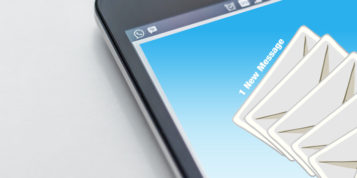Once considered an indispensable business tool, email is under pressure to evolve amidst growing competition from alternative solutions. But despite this, it is still one of the most important customer communication channels available today.
Just consider inbox zero, social networking, instant communication platforms, and mobile apps. Many people (especially millennials entering the workforce) view these as ‘traditional’ approaches. Instead, the likes of artificial intelligence and chatbots are being touted as likely to disrupt traditional communication and customer service channels like email. But even though the technology might differ, every year brings with it new tools that will supposedly kill email and yet every year email continues to outperform other channels on marketing ROI.
Death to the masses
If anything, this pressure should be taken as an impetus for email to be done differently in the digitally connected world. Marketers have more data than ever at our disposal. Omni-channel marketing has become a business imperative. Customers demand hyper-personalisation and expect relevant content from service providers to suit their unique requirements.
This always-on environment has killed some forms of email. Surplus to requirements are mass emails with the ‘one size fits all’ marketing approach. Unfortunately, some businesses have not yet acknowledged the death knell and are continuing blindly with these formats, despite the fact that ‘spray and pray’ initiatives have lost all relevance, and have zero resonance with customers.
Fresh insights
According to Statista, global email users will grow from the 3.7 billion of last year to more than 4.2 billion by 2022. And with ThinData finding that 80 percent of marketers still agree that email marketing is one of the most effective strategies, the platform is certainly here to stay for the foreseeable future.
If these numbers are to be believed, then it is imperative to leverage the data that organisations have at their disposal and change how they use email. Thanks to mobile apps, social networks, and online shopping environments, personalisation has become a given. Why should email be any different? Companies must analyse their customer data and integrate those insights across the entire business, including how they communicate.
Email in the digital age is alive and well
Leveraging what today’s technology provides, marketers can make customers feel more valued, improving conversion rates and ROI. Here are some of the tools and tactics:
- Hyper-personalisation – using real-time data, dynamic content and database segmentation to create the perfect message for each person, at the perfect time.
- Omni-channel experience – creating a seamless experience for your customer across a variety of channels.
- Automation – sending relevant content at the right time, when the customer needs it goes a long way in encouraging customer retention.
- Mobile first – designing for mobile readers means focused content, clear Call To Action buttons and carefully crafted subject line and preheader copy.
Using available technology and tactics, email promises to continue to be a high-performing, cost-effective avenue to increasing customer engagement through digital communications.





